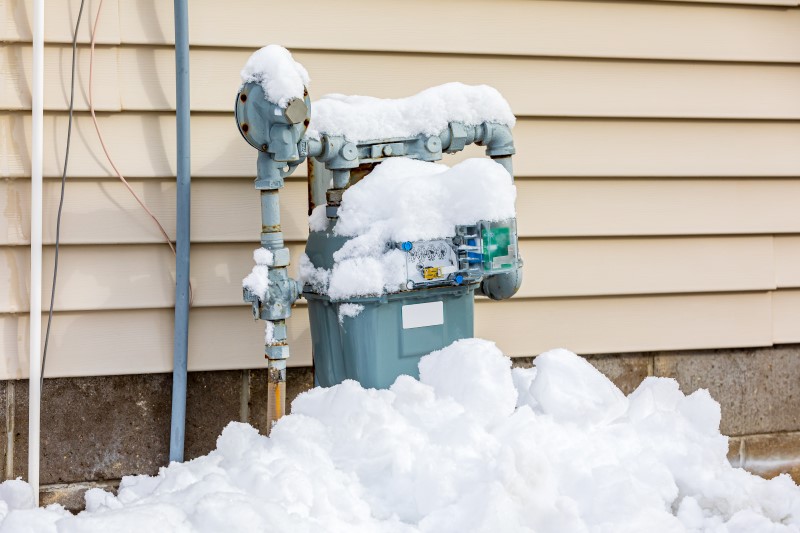U.S. Natural Gas Prices Drop 6% Amid Lower Heating Demand, Mild Weather Forecasts
(Reuters) — U.S. natural gas futures fell about 6% on Wednesday on rising output and forecasts for less cold weather and lower heating demand over the next two weeks than previously expected.
That price drop occurred despite a report from the U.S. Energy Information Administration (EIA) showing utilities pulled an expected 2 billion cubic feet (Bcf) of gas storage during mild weather and low heating demand last week.
That was not far off the 1-Bcf build analysts forecast in a Reuters poll and compares with a build of 5 Bcf during the same week last year and a five-year average draw of 30 Bcf for this time of year.
On its first day as the front month, gas futures for January delivery on the New York Mercantile Exchange fell 20.9 cents, or 6.0%, to $3.258 per million British thermal units (MMBtu) at 12:15 p.m. EST.
On Tuesday, when December futures were still the front month, the contract closed at its highest level since November 2023 for a second day in a row.
In the spot market, meanwhile, the coming of wintry weather across parts of the United States caused gas prices to rise to their highest since January in several regions, including the Henry Hub benchmark in Louisiana, New York, Chicago and the Eastern Gas South hub in Pennsylvania.
Supply and Demand
Financial firm LSEG said average gas output in the Lower 48 U.S. states rose to 101.4 billion cubic feet per day (Bcf/d) so far in November from 101.1 Bcf/d in October. That compares with a record 105.3 Bcf/d in December 2023.
Analysts expect producers to boost gas output in 2025 as rising demand from liquefied natural gas (LNG) export plants increases prices after drillers reduced production in 2024 for the first time since the COVID-19 pandemic cut usage of the fuel.
Annual average gas prices at the Henry Hub will soar by over 40% in 2025 after dropping to a four-year low in 2024, according to analysts forecasts.
Meteorologists projected that weather in the Lower 48 will turn from mostly colder than normal now through Dec. 3 to mostly near-normal levels from Dec. 4-12.
With seasonally colder weather coming, LSEG forecast average gas demand in the Lower 48, including exports, would jump from 114.5 Bcf/d this week to 131.0 Bcf/d next week. The forecast for next week was lower than LSEG's outlook on Tuesday.
The amount of gas flowing to the seven big operating U.S. LNG export plants rose to an average of 13.5 Bcf/d so far in November from 13.1 Bcf/d in October. That compares with a monthly record high of 14.7 Bcf/d in December 2023.
Analysts, however, have noted LNG feedgas flows would be even higher but for issues at Freeport LNG in Texas.
Gas flows to the 2.1-Bcf/d Freeport plant have averaged 1.7 Bcf/d over the past two weeks due in part to various problems that caused two of the plant's three liquefaction trains to shut unexpectedly. Train 2 tripped off line on Nov. 15 and again on Nov. 22, while Train 3 shut on Nov. 20.
Related News
Related News

- Enbridge Plans 86-Mile Pipeline Expansion, Bringing 850 Workers to Northern B.C.
- Intensity, Rainbow Energy to Build 344-Mile Gas Pipeline Across North Dakota
- U.S. Moves to Block Enterprise Products’ Exports to China Over Security Risk
- Strike Pioneers First-of-Its-Kind Pipe-in-Pipe Installation on Gulf Coast with Enbridge
- 208-Mile Mississippi-to-Alabama Gas Pipeline Moves Into FERC Review
- U.S. Pipeline Expansion to Add 99 Bcf/d, Mostly for LNG Export, Report Finds
- A Systematic Approach To Ensuring Pipeline Integrity
- 275-Mile Texas-to-Oklahoma Gas Pipeline Enters Open Season
- LNG Canada Start-Up Fails to Lift Gas Prices Amid Supply Glut
- Strike Pioneers First-of-Its-Kind Pipe-in-Pipe Installation on Gulf Coast with Enbridge





Comments